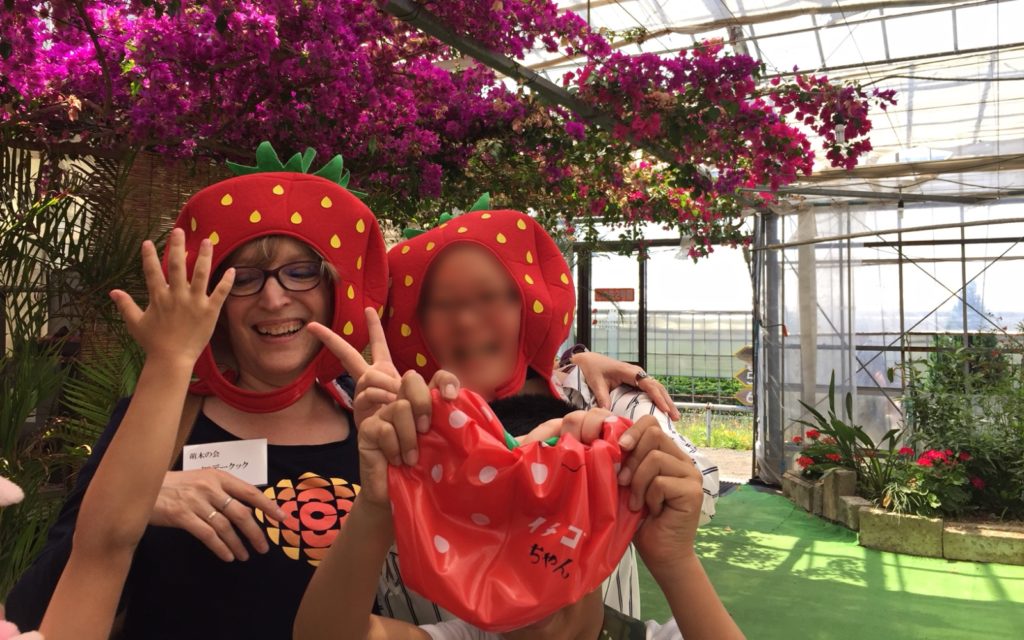Confessions & Confusions: Lots Of Thoughts On A Foster Care Fruit-Picking Kids Day
A Thousand Strawberries For Thousand Thoughts
I recently attended an event with children living in institutionalized care homes and such who have been adopted. Here’s what I observed (and felt) on that day.
Hello all! I apologize for not having written for a while — unfortunately, my father passed away in early April, so I had to dash home to Canada and it took me a while to get my writing mojo back once I’d returned to Japan. But back I am with something uplifting and thought-provoking: my recollection of a recent strawberry picking day out with the kids — and not just mine!
My family belongs to our grassroots adoptive/foster group and every year our group hosts a fruit-picking event for institutionalized kids. There are two institutions in our area; the one Natsumi came from and another. This year was the other’s turn.
It was a beautiful day, the sun was warm and there was a cool breeze in the air. Just a short drive away from our home, 80 of us, children and caregivers (institution staff and parents), gathered at a fruit orchard to pick and eat as many strawberries as we could.
Shinji didn’t join us, opting to play with his school friends, but Natsumi, having experienced the joy of all-you-can-eat strawberries, was chomping at the bit until we left the house.
We arrived early to help set up the tables, put out name tags, and do whatever else needed to be done to prepare for the event. Around 10:30 a.m., a bus arrived from the institution and everyone was given a bag of treats as they entered our picnic area. Once we’d all registered, we were let loose in the greenhouse, armed with plastic trays. In each tray was a square section for the strawberries, and a round one for a squeeze of sweetened condensed milk. We were given 30 minutes to eat as much as we could and all came out with satisfied expressions and pink-stained fingers.

Myself, together with children taking part in the event.
Back in the picnic space, each child was given a plastic tray filled with cabbage leaves and sliced carrots for the tethered goats out in the nearby field. After the goats were fed, we humans had a lunch of tonjiru soup, onigiri rice balls, and karaage (fried chicken). It doesn’t seem like much, but after all the strawberries, we really didn’t need more food.
At our lunch table, I met the husband of a woman with whom I’d attended a foster training course. He started off asking me the usual questions about where I was from, how long had I been in Japan, if I would retire in Japan, etc., then suddenly switched to English and began telling me about doing his master’s degree in the US. We exchanged business cards and I was glad that finally, after being here for almost ten years, found someone in the group who speaks English!
Another thing that struck me was the great need the institutionalized kids have for physical affection.
After lunch, we all played bingo and everyone got a prize. I got a charge from watching the children jumping up and down in excitement, shouting out “Bingo” even before enough numbers had been called. There were enough prizes for each child to receive two items. Once the game was over, everyone was given a ticket for the gelato counter inside the orchard shop.
Then we cleaned up, packed up, and went to wait for the institution staff to load the bus with their charges. We all waved goodbye and didn’t stop until the bus was well out of sight.
One thing I really noticed during the event were some differences in the characters of the children who had been adopted or were currently being fostered and those who were institutionalized. For one, the kids with families seemed calmer and more relaxed. I had a coterie which included Natsumi, a foster girl a year older, and two young fostered boys. We went about all day in a group, alternatively speaking English and Japanese, and just enjoying each other’s company. I noticed that some of the institutionalized kids, on the other hand, were wary of the animals, and some of the humans, too. A few of them were even a little rough, one girl slapping at a goat with her cabbage leaves until I told her to be gentle.
Another thing that struck me was the great need the institutionalized kids have for physical affection. One toddler took a shine to my husband and repeatedly insisted that he pick her up and hug her. He asked me to take over, but no one else would do for her, but him. I had to fight my usual tendency to think a lot about how much affection she was missing and work myself up to tears. I had the fleeting idea of just picking her up and taking her with us, but that would also have been difficult. The urge to take the kids home is always strong at these kinds of events.
Usually, I’m exhausted after a day like today, but everything seemed just perfect. I am glad to be a part of this group of people who are giving children better lives. Yet, while I enjoyed today’s events, I also hope that the number of kids on the bus will decrease as the number of families fostering children increases.
For more information on adopting in Japan, see the following articles:
- How To Adopt In Japan: Adoptive Parents Share Their Stories
- Confessions & Confusions: 3 Common Questions On Adoption
- One Canadian Woman’s Journey To Adopting In Japan
“Confessions & Confusions” is Melodie Cook’s regular column on adoption and fostering in Japan. Here, she answers questions from potential adoptive or foster parents, those who have already been through the system or any parents who just need to let off some steam, as well as discusses various aspects of living as an adoptive and fostering family in Japan. Got a question? Leave a comment or send us an email at editorial@gplusmedia.com
















Leave a Reply